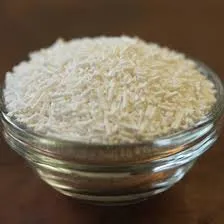
Types and Functions of Common Food Emulsifiers in Culinary Applications
Common Emulsifiers in Food
Emulsifiers play a vital role in the food industry, acting as agents that help mix ingredients that typically do not blend well, such as oil and water. By stabilizing emulsions, these substances improve the texture, appearance, and shelf life of various food products. In this article, we will explore some common emulsifiers used in food production, their functions, and their sources.
What Are Emulsifiers?
Emulsifiers are molecules that have both hydrophilic (water-attracting) and hydrophobic (water-repelling) properties. This unique structure allows them to reduce the surface tension between two immiscible phases, such as oil and water. When added to food products, emulsifiers facilitate the uniform distribution of fat droplets within a continuous water phase, creating a stable emulsion. This stability is crucial for ensuring that food items maintain their texture and prevent separation over time.
Common Types of Emulsifiers
1. Lecithin One of the most well-known natural emulsifiers, lecithin is derived from soybeans, eggs, and sunflower seeds. It is commonly used in confectionery, margarine, and salad dressings. Lecithin not only helps stabilize emulsions but also contributes to a creamy texture and enhances the mouthfeel of products.
2. Mono- and Diglycerides These emulsifiers are derived from glycerol and fatty acids and are widely used in baked goods, ice creams, and spreads. Mono- and diglycerides improve the texture by providing a soft and tender crumb in baked goods while preventing the formation of ice crystals in frozen desserts.
3. Sorbitan Esters (Span) These are non-ionic emulsifiers created from sorbitol and fatty acids. Commonly used in bakery products, margarine, and dressings, sorbitan esters help to enhance the stability of oil-in-water emulsions and delay staling in baked items.
common emulsifiers in food

4. Polysorbates (Tween) Similar to sorbitan esters, polysorbates are derived from sorbitol and are effective emulsifiers in a variety of applications, including dairy products, salad dressings, and sauces. They are known for their ability to maintain emulsion stability and improve the texture and mouthfeel of foods.
5. Guar Gum This natural thickening agent is derived from the seeds of the guar plant. Guar gum is widely used in gluten-free products and acts as an emulsifier in salad dressings and sauces, providing viscosity and a smooth texture.
6. Xanthan Gum Produced through the fermentation of sugars by the Xanthomonas campestris bacterium, xanthan gum is an effective emulsifier and thickening agent. It's commonly found in salad dressings, sauces, and gluten-free products, where it helps stabilize emulsions and improve overall texture.
Why Use Emulsifiers?
The use of emulsifiers in food production offers several advantages. First and foremost, they contribute to the desired texture and sensory qualities of food products. Emulsifiers can enhance creaminess, improve mouthfeel, and create a uniform appearance. Additionally, they improve the stability and shelf life of emulsions by preventing phase separation, which can lead to undesirable changes in texture and flavor over time.
Moreover, emulsifiers can have functional benefits in reducing the amount of fat required in certain products without compromising texture or flavor. This reduction can lead to healthier options, aligning with consumer demand for lower-fat foods while still delivering satisfactory taste and mouthfeel.
Conclusion
Emulsifiers are crucial components in the modern food industry, facilitating the creation of a wide array of products with desirable textures and stable formulations. By understanding the various types of emulsifiers and their functions, both food manufacturers and consumers can appreciate the complexities involved in food production. As food science continues to advance, the role of emulsifiers will only become more prominent in developing innovative, high-quality food products.
-
The Safety Challenges of Ammonium Nitrate FertilizerNewsJun.26,2025
-
The Critical Role of Mining ChemicalsNewsJun.26,2025
-
Shelf Life of Glacial Acetic Acid Food GradeNewsJun.26,2025
-
Enhancing PVC Longevity with 1,2,3-Benzotriazole InnovationsNewsJun.26,2025
-
China’s Dominance in Food Additive ProductionNewsJun.26,2025
-
Can Aluminum Hydroxide Replace More Toxic Alternatives?NewsJun.26,2025
-
PE and PP Plastics with Benzotriazole AdditivesNewsJun.12,2025
Hebei Tenger Chemical Technology Co., Ltd. focuses on the chemical industry and is committed to the export service of chemical raw materials.
-

view more DiethanolisopropanolamineIn the ever-growing field of chemical solutions, diethanolisopropanolamine (DEIPA) stands out as a versatile and important compound. Due to its unique chemical structure and properties, DEIPA is of interest to various industries including construction, personal care, and agriculture. -

view more TriisopropanolamineTriisopropanolamine (TIPA) alkanol amine substance, is a kind of alcohol amine compound with amino and alcohol hydroxyl, and because of its molecules contains both amino and hydroxyl. -

view more Tetramethyl Thiuram DisulfideTetramethyl thiuram disulfide, also known as TMTD, is a white to light-yellow powder with a distinct sulfur-like odor. It is soluble in organic solvents such as benzene, acetone, and ethyl acetate, making it highly versatile for use in different formulations. TMTD is known for its excellent vulcanization acceleration properties, which makes it a key ingredient in the production of rubber products. Additionally, it acts as an effective fungicide and bactericide, making it valuable in agricultural applications. Its high purity and stability ensure consistent performance, making it a preferred choice for manufacturers across various industries.











